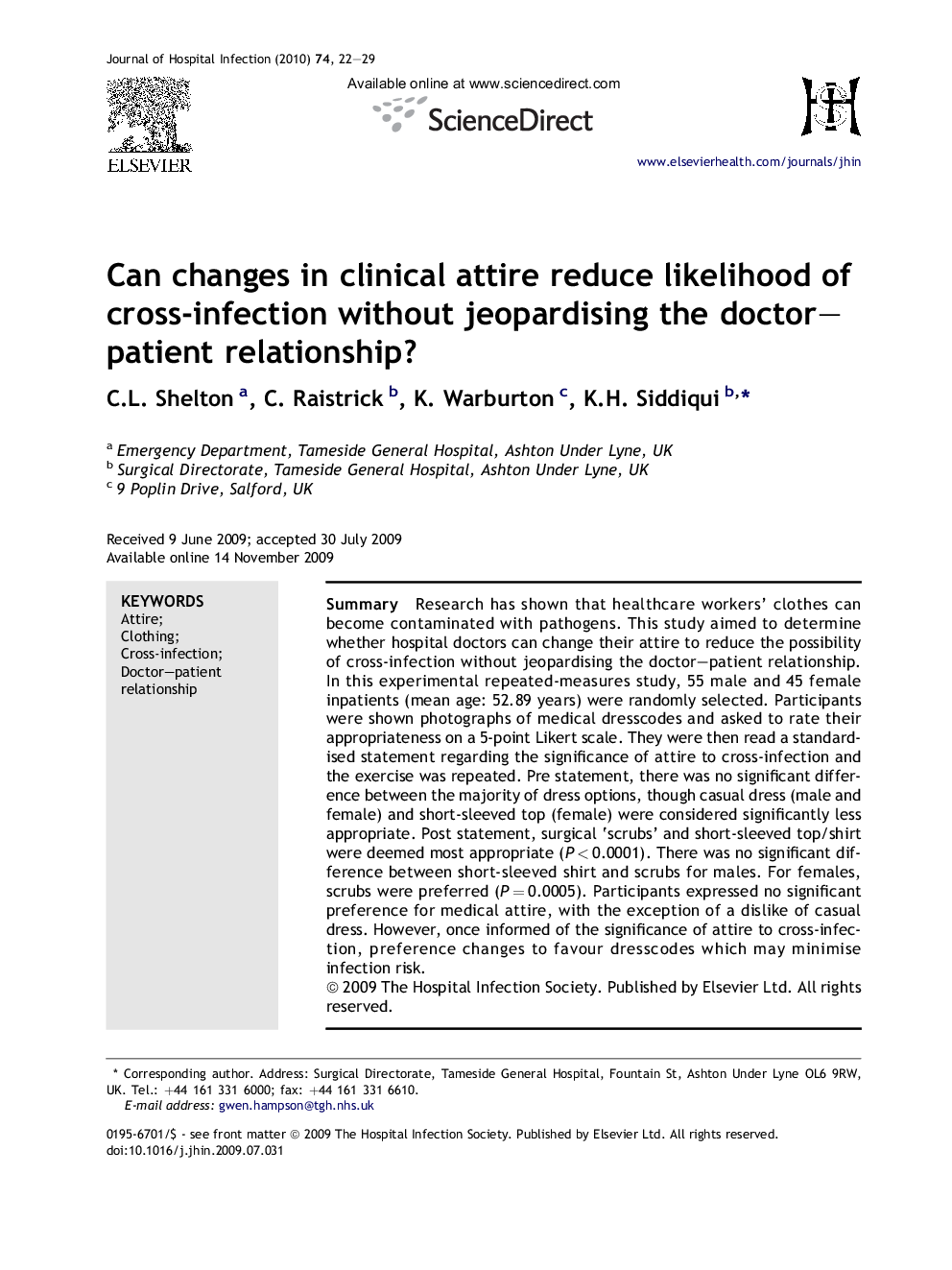| Article ID | Journal | Published Year | Pages | File Type |
|---|---|---|---|---|
| 3372908 | Journal of Hospital Infection | 2010 | 8 Pages |
SummaryResearch has shown that healthcare workers' clothes can become contaminated with pathogens. This study aimed to determine whether hospital doctors can change their attire to reduce the possibility of cross-infection without jeopardising the doctor–patient relationship. In this experimental repeated-measures study, 55 male and 45 female inpatients (mean age: 52.89 years) were randomly selected. Participants were shown photographs of medical dresscodes and asked to rate their appropriateness on a 5-point Likert scale. They were then read a standardised statement regarding the significance of attire to cross-infection and the exercise was repeated. Pre statement, there was no significant difference between the majority of dress options, though casual dress (male and female) and short-sleeved top (female) were considered significantly less appropriate. Post statement, surgical ‘scrubs’ and short-sleeved top/shirt were deemed most appropriate (P < 0.0001). There was no significant difference between short-sleeved shirt and scrubs for males. For females, scrubs were preferred (P = 0.0005). Participants expressed no significant preference for medical attire, with the exception of a dislike of casual dress. However, once informed of the significance of attire to cross-infection, preference changes to favour dresscodes which may minimise infection risk.
